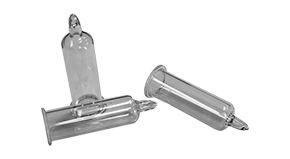 DataSheet Download
DataSheet Download
The photoionization detector or sensor consists of a shortwavelength ultraviolet (UV) lamp shining onto a small cell containing the gas sample and a set of electrodes. The electrodes have an electrical potential applied. The UV lighting ionizes Volatile Organic Compounds (VOCs), resulting in electrons being ejected and forming positively charged molecules. The electrons and positive ions are propelled to the electrodes under a potential difference and the resulting current is proportional to the gas or vapor concentration. In general, any compound with ionization energy (IE) lower than that of the lamp photons can be ionized and measured.
The heart of the PID or sensor is a lamp that emits photons in the vacuum-ultraviolet region. The lamp consists of an enclosure glass tubing, a crystal window which attached on glass tubing and filled gases in the enclosure tubing. The photon energy depends on the type of gas used to fill the lamp, and the crystal used as a transmission window.
| Lamp energy (eV) | 10.6 |
| Measurement level | ppb and ppm |
| Size (length X diameter, mm) | 41.0x12.6 |
| Excitation method | RF, electromagnetic field driven lamps |
| Ignition voltage (V) | >1800 |
| Ignition time (ms) | 100 |
| Operating current (mA) | 100-200 |
| Typical RF power input (W) | 0.6 |
